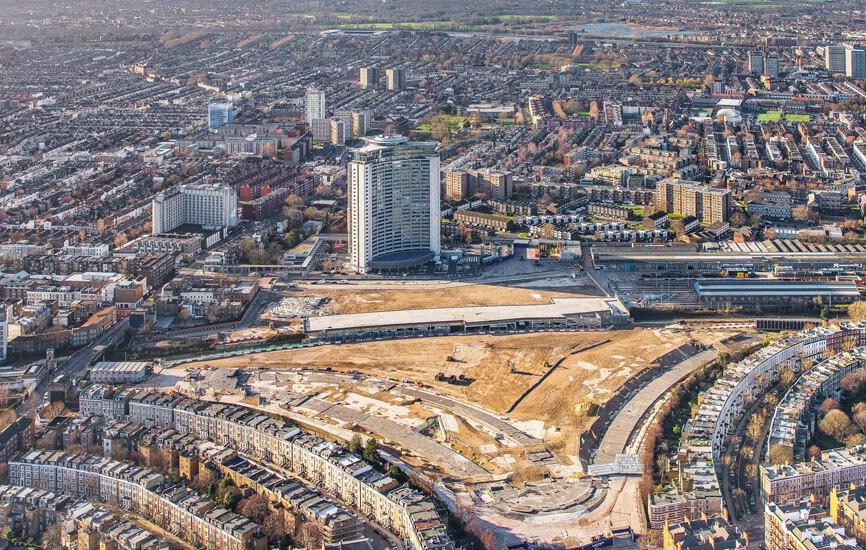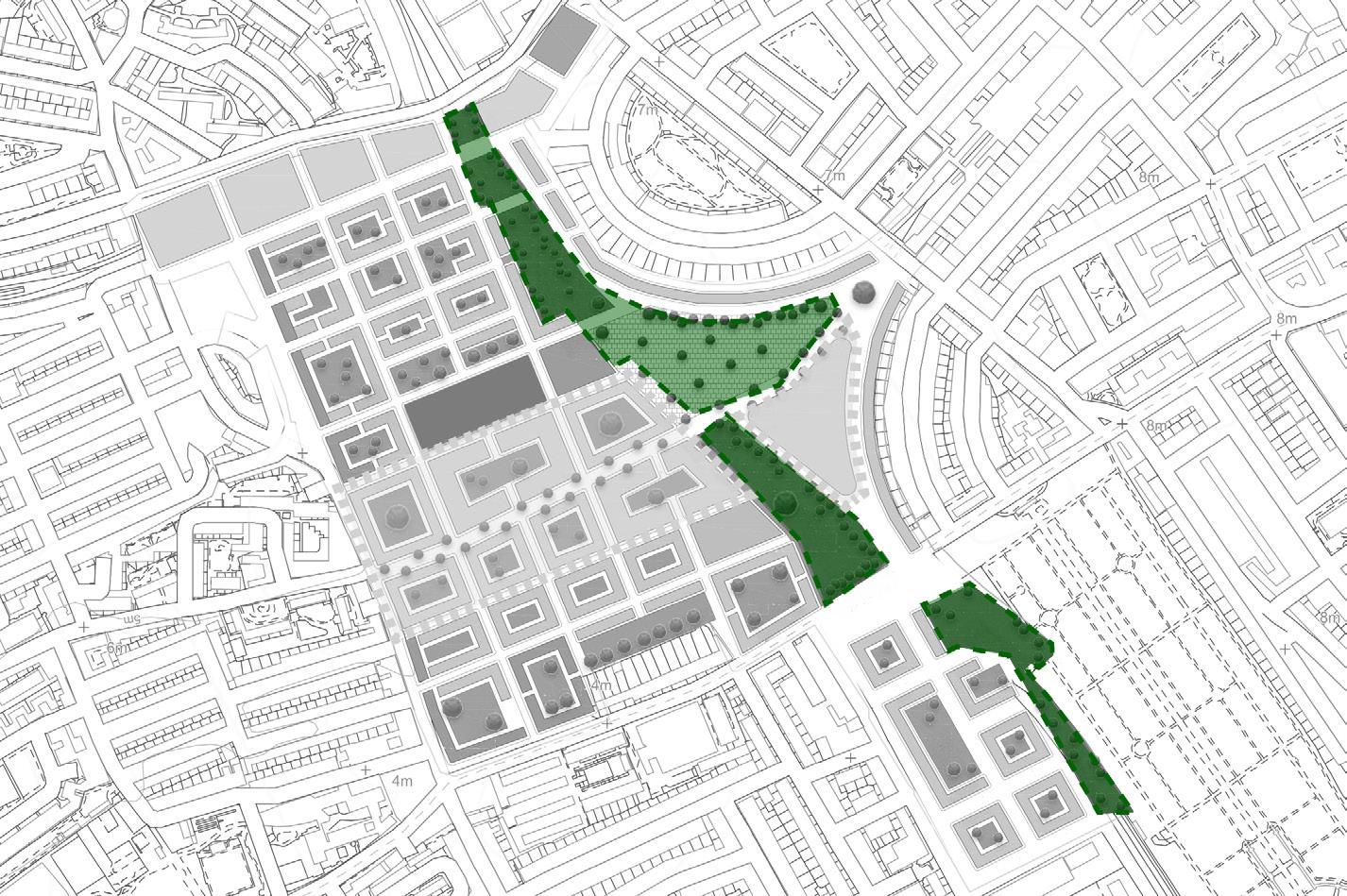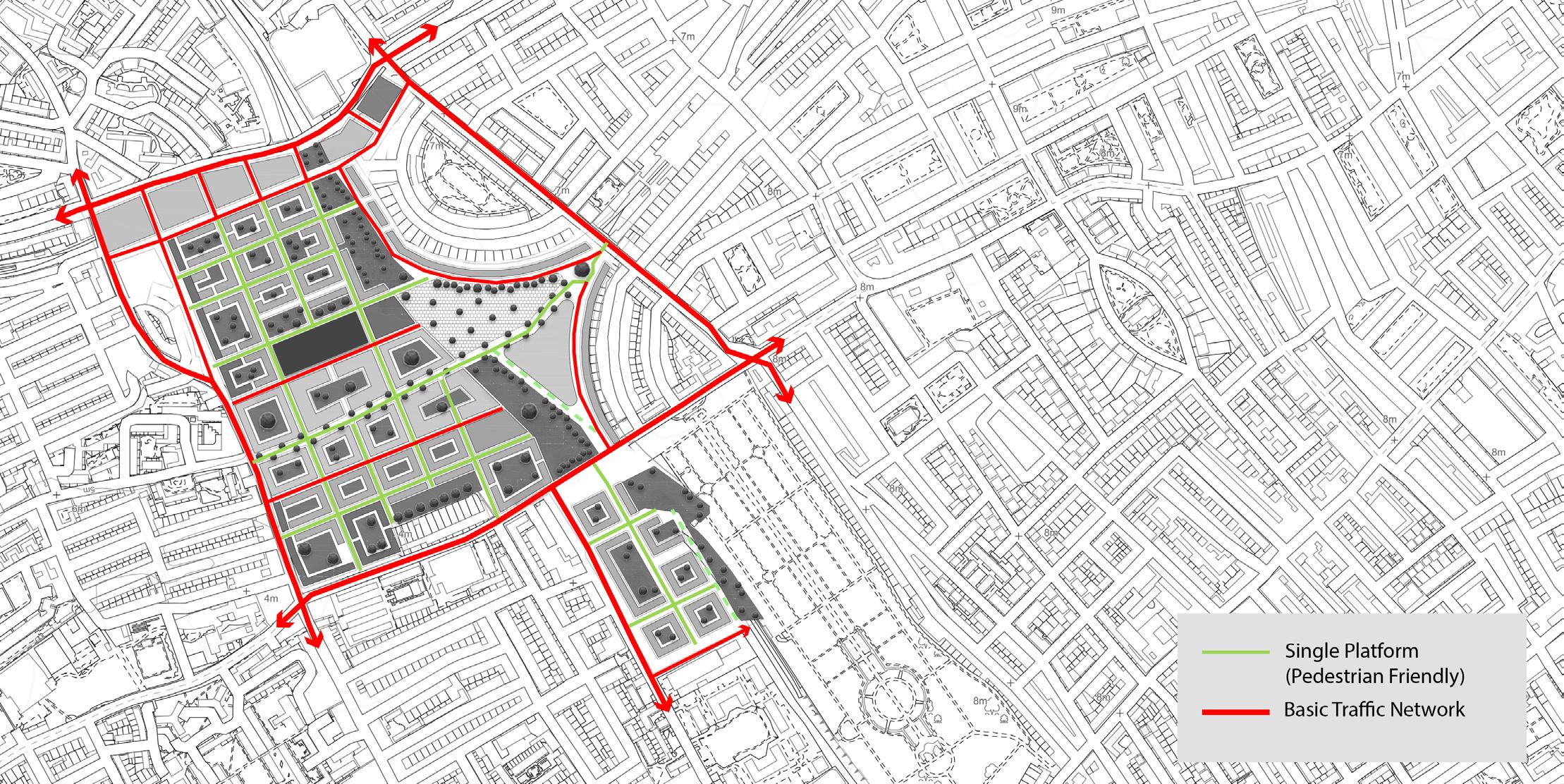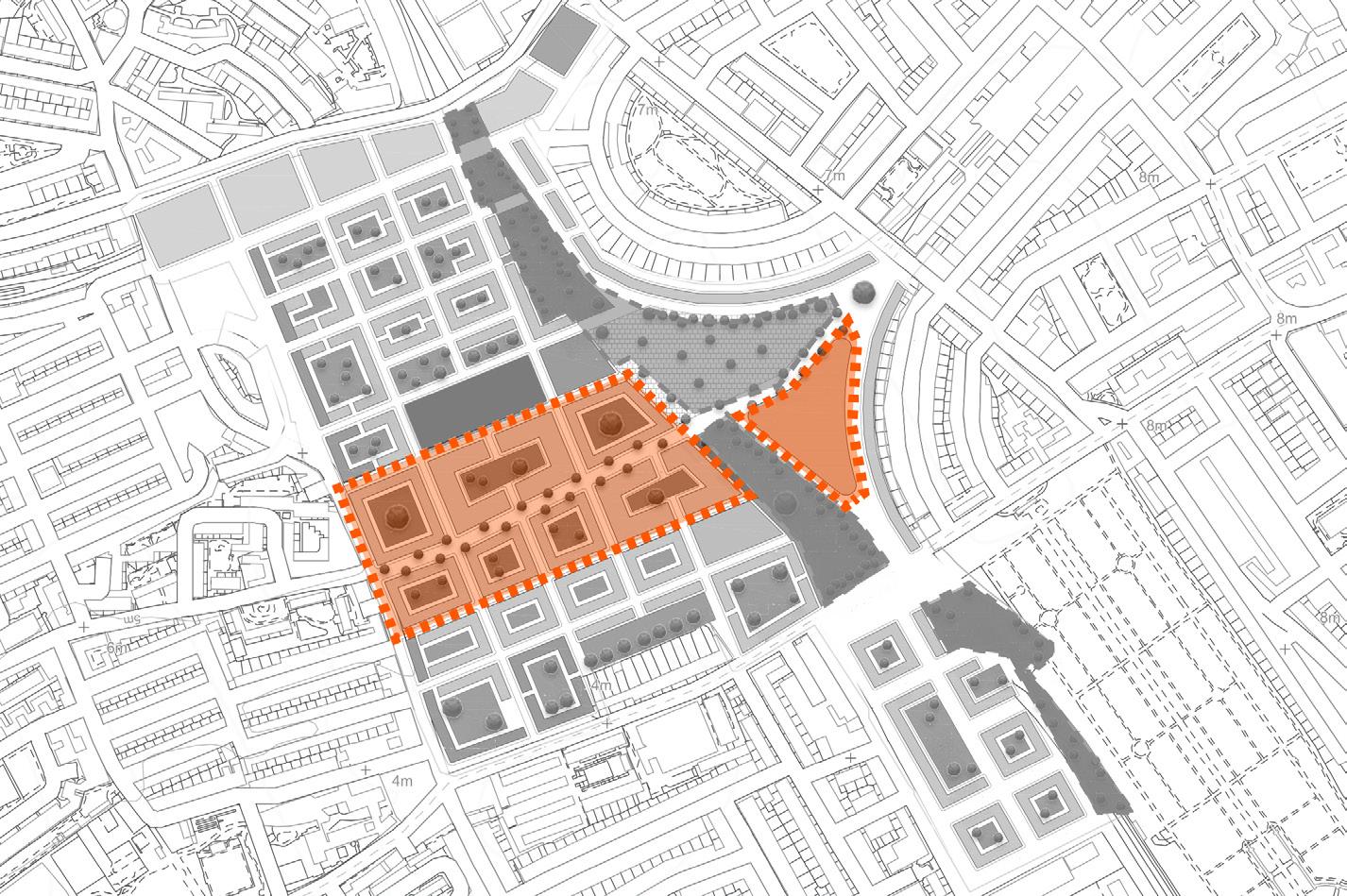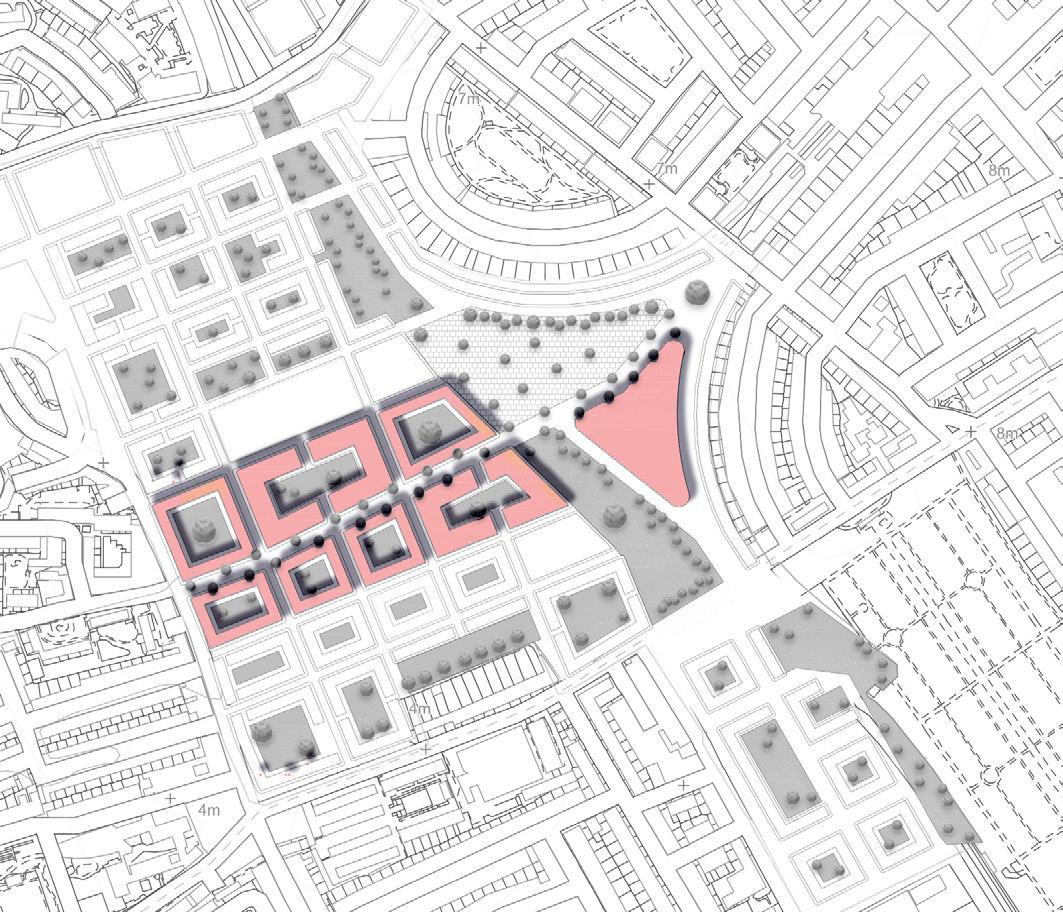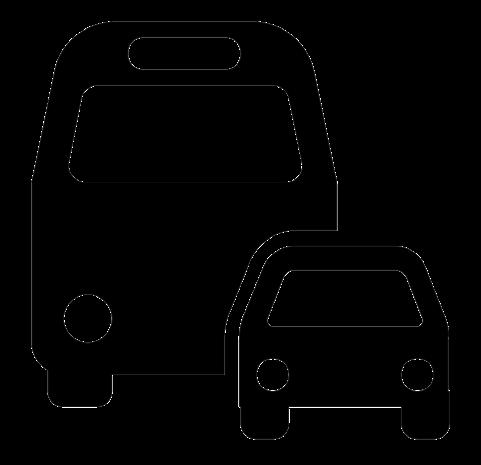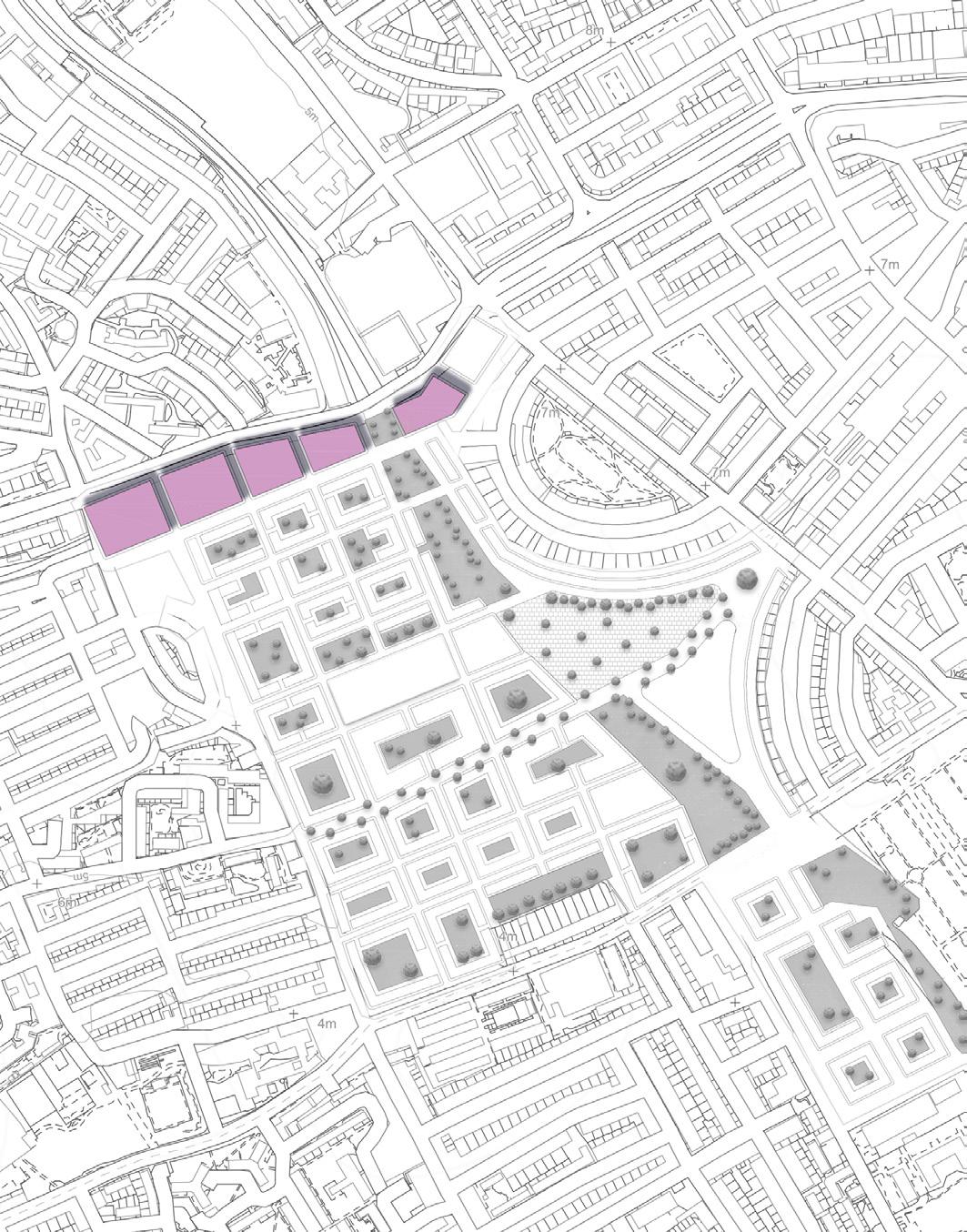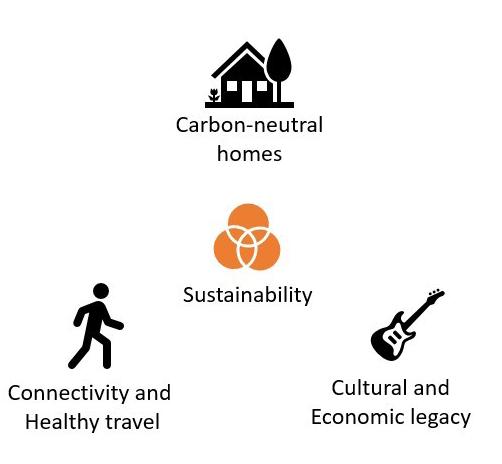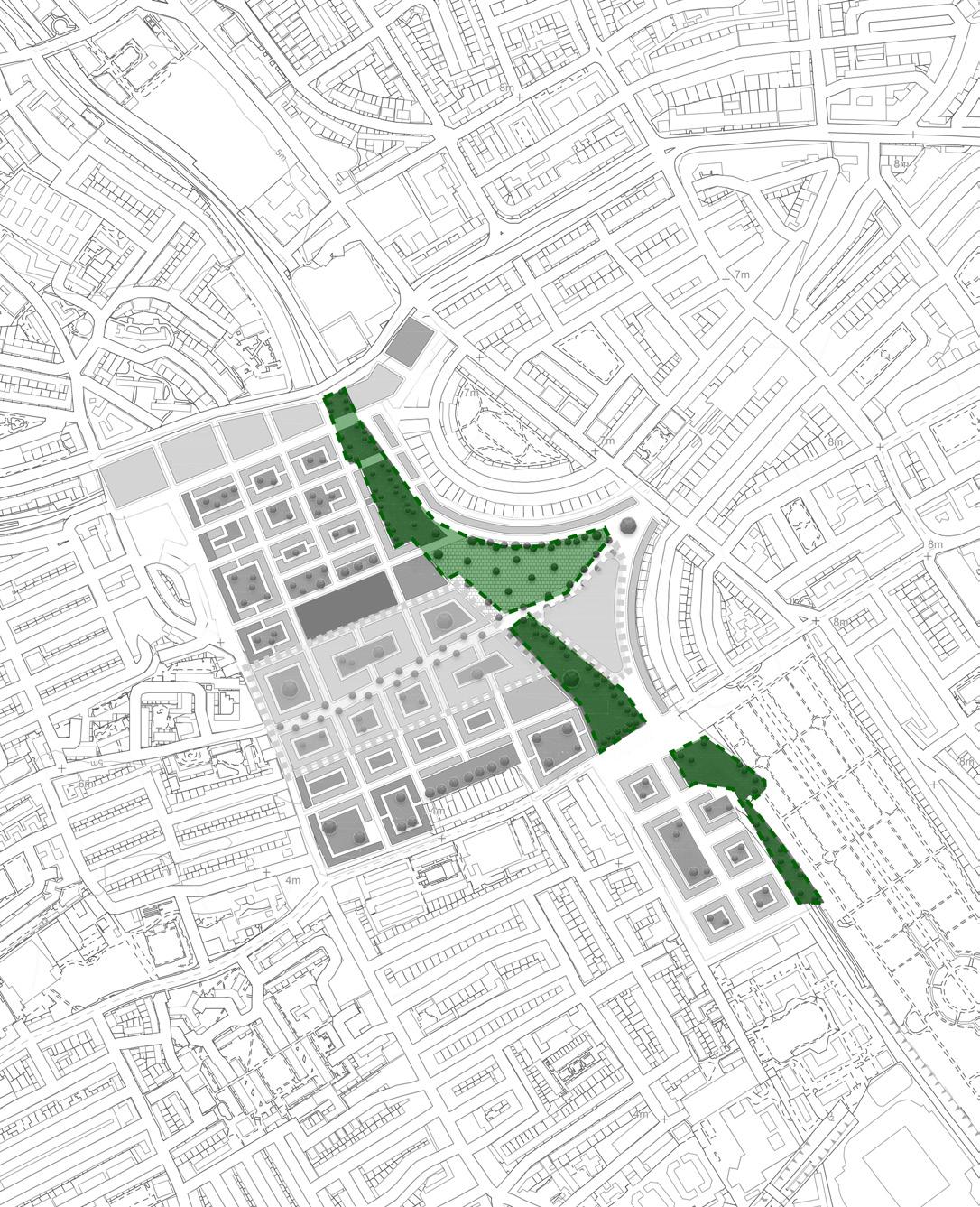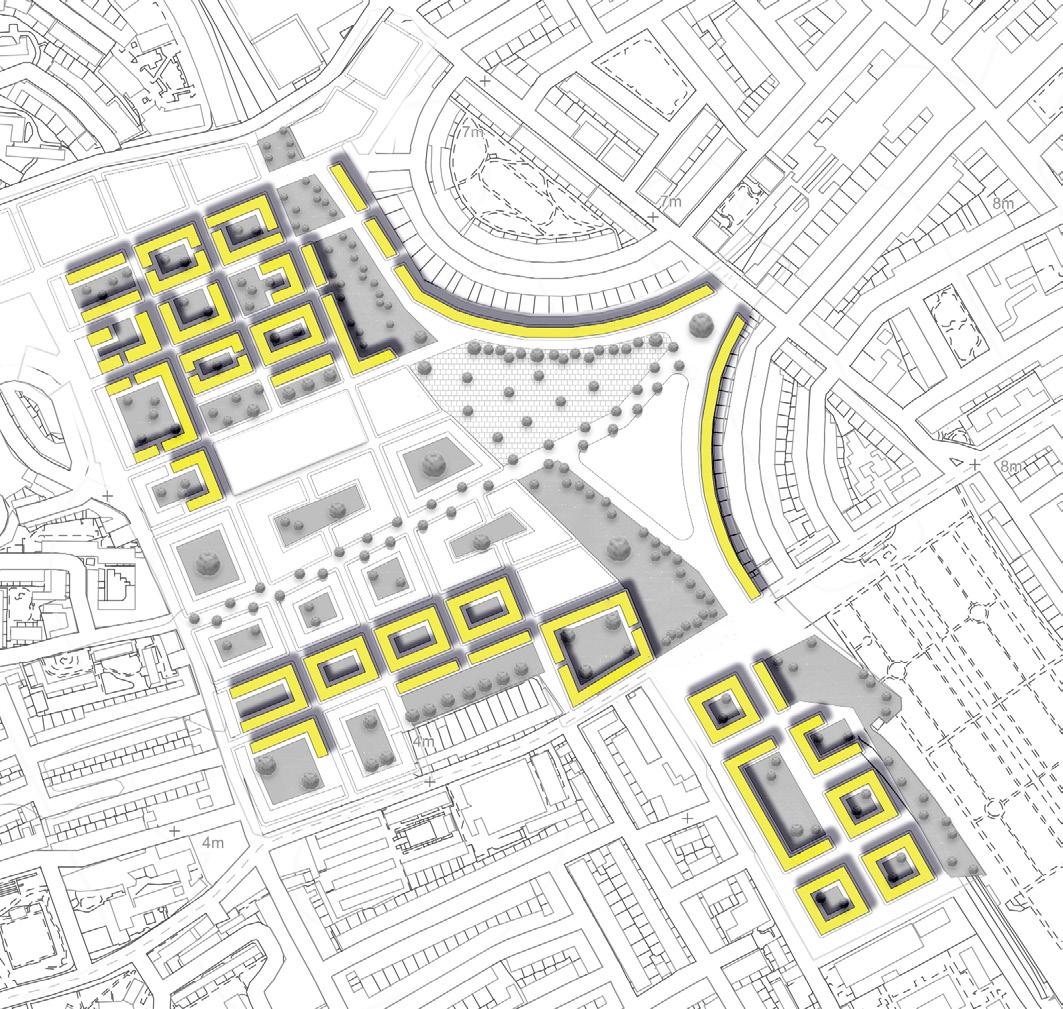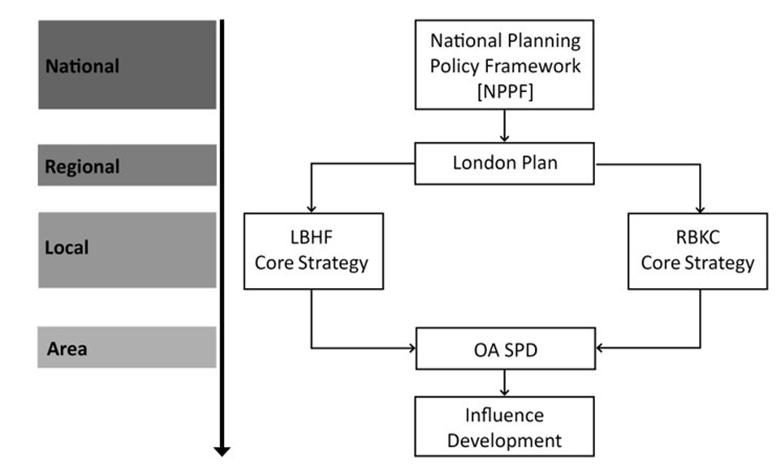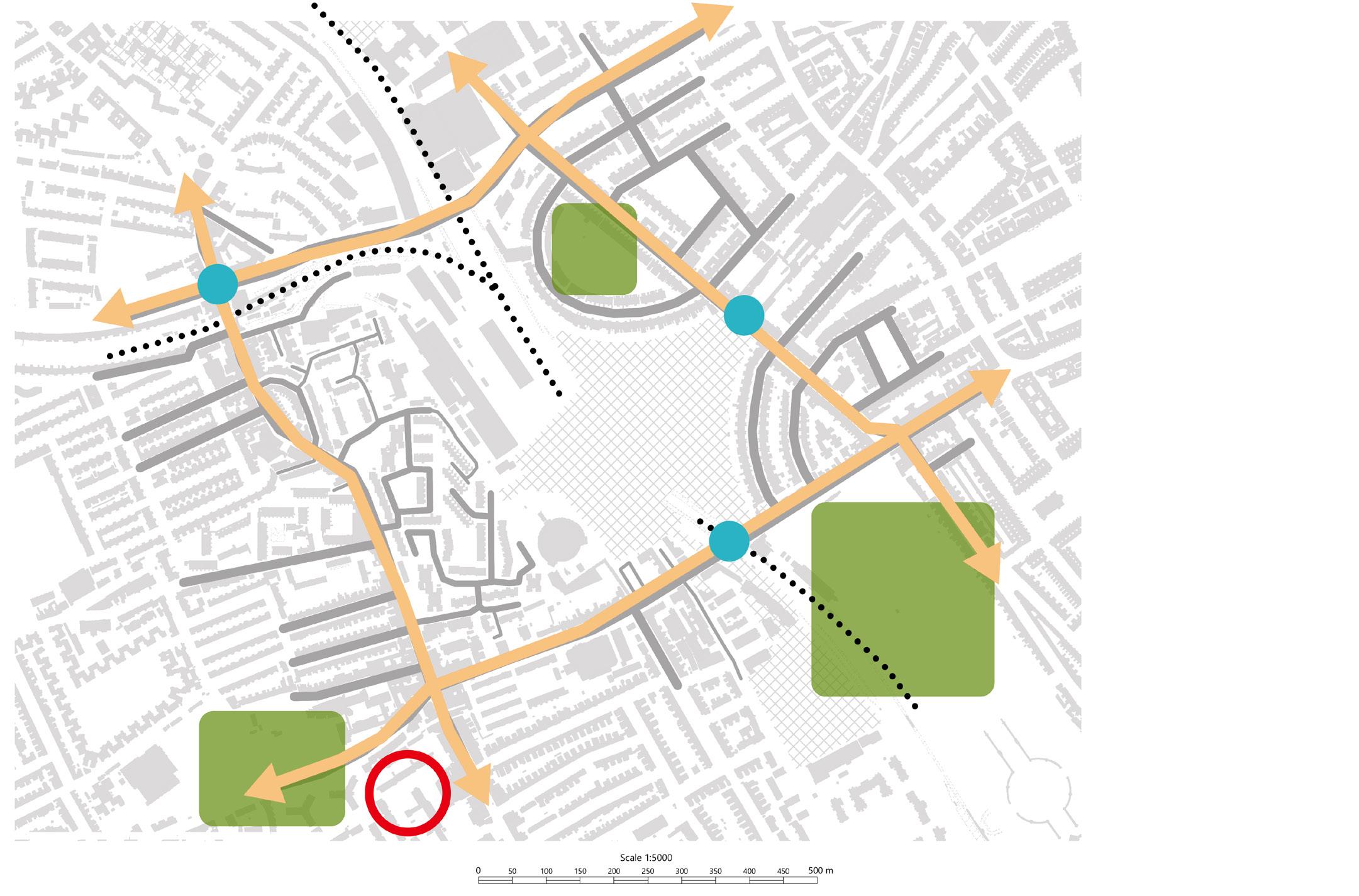HC 1.1: Create affo rd a b l e a n d h i g h d e n si ty h o usi n g Context
Case Study - Woodbery Down Regeneration
This policy responds to the GLA’s agenda around increase housebuilding and density. It also responds to local community groups such as GIbbs Green tenants association who called for high levels of affordable housing. This demand has been balanced with financial viabilty, proposing 40% affordable housing, which is still higher than the GLA’s policy of 35%.
Desired Outcome To create affordable and high density residential housing, providing a range of tenures, including 30% privately owned market-value units, 30% shared ownership, 80% of market-value, 35% social rent (managed by a housing association; rent valued at 33% of individual’s income.), 5% assisted housing. There will be a range of units available, from studio flats up to 3 bedroom family apartments. These will be complemented by assited housing units for elderly and vulnerable residents. Housing will be designed and developed through meaningful consultation and social units will be allocated through a means assessment in partnership between the local authority and the housing association. Housing will have a density of 300 dwellings per hectare in line with the GLA’s (2019) policy 3.4 on optimising housing potential in the draft new London Plan.
Policy Tools
This policy combines formal guidance, incentive and control tools as well as informal tools such as design guides to influence development. A development brief will be expected from local authority which sets out the desired outcome of this policy prior to submission of planning application. An urban design framework tool will also be proposed to ensure housing meets the required density standards and suitable layout. This will be complemented by guidance policy from the GLA’s new London Plan around affordable housing provision and density. Formal tools Guidance • GLA Policy H7 Affordable housing tenure • GLA policy 3.4 Optimising Housing Potential • Earl’s Court Urban Design framework Incentive – LA support to developer in establishing partnership with housing association. GLA partfunding for affordable tenure provision. Control – Development brief, planning consent Formal tools Guidance
Informal tools Negotiation between local authority and developer in achieving desirable outcomes
The Woodbery Down Regeneration-Desired objectives London Woodberry Down is a 30 year RICS award-winning regeneration project in North London. The existing 42 residential blocks had fallen into disrepair and required redevelopment. So far 1,479 new homes (of which 736 are affordable) and 6.61 acres of public green space have been delivered. The site includes two schools, retail space and a community centre. The “tenure split” for a revised masterplan approved in 2014 was for 43 per cent of the project’s homes over forthcoming phases to be “affordable”, with 47 per cent of those to be let at social rent levels and 53 per cent for intermediate shared ownership.
The Woodbery Down Regeneration-Tools used It required a development brief tool with the expectation of a partnership between the council, commercial developer Berkeley Homes, the Notting Hill Genesis housing association, the Manor House Development Trust and the resident-led Woodberry Down Community Organisation. The local authority also developed an urban design framework which ensured the appropriate levels of density, tenure mix and layout was achieved. The two tools together were effective in meeting the desired outcomes due to strong partnership working with shared goals and good consultation methods, guided by clear guidance. (see Berkeley Homes Case Study, 2018)
CABE Design report – Better Neighbourhoods: Making higher densities work Case study: Woodberry Down scheme
Informal tools CABE report: What makes an eco-town?
19

